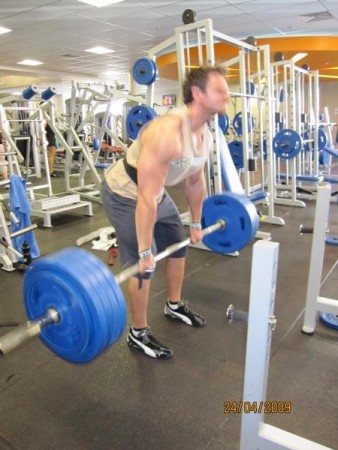There are only 2 ways to increase strength
The Secret To Unlocking Herculean Strength
Of all the fancy exercises, equipment, training programs and guru’s that are around. At the end of the day, there are only 2 ways that you are ever going to improve strength.
If your goal is to get faster, stronger, more powerful in your chosen endeavour, then you need to make the right choices when you train. Your choice of exercise, the weight, the reps, etc, are all critical in determining the success of your program. So, what is the only way’s that your body increases strength? And how do you put these principles into your own training?
The 2 ways your body improves strength is simple, by developing Intramuscular and Intermuscular coordination. “Is That It?” you say? Is that your big secret? Well, everything you will ever read on strength training and how to improve strength comes under one of these two umbrella’s.
1) Intermuscular Coordination.
This refers to the timing and coordinated effort of muscular contraction and movement that occurs BETWEEN muscle groups.
No one movement happens in isolation, but involves an integrated effort among many joints and muscles. Look at the Barbell Back Squat for example. The squat is not just about thigh strength but also involves coordinated action of the gluteals and hamstrings, lower back musculature and also upper body strength. As you can see, there are literally hundreds of muscles that are involved when you perform a whole body action such as a heavy squat
A coordinated effort between all of the variables involved in a lift results in an effective, powerful movement with the greatest amount of force being generated with minimal wasted effort.
Have you ever seen a novice trying to perform a lift for the first time? Or even a bodybuilding friend trying to perform a snatch with a 32kg bell for the first time? It may not be that they don’t have the necessary strength to perform the lift, it’s just that they lack to coordinated effort and timing amongst the muscles groups involved in order to perform an efficient lift.
2) Intramuscular Coordination.
Intramuscular coordination now turns our attention to what is happening at the indvidual muscle level. What if you were able to learn how to contract your muscle harder? Do you think this would lead to an increase in strength? You better believe it. You can increase strength at the muscular level 2 ways.
i) The first one is to make the muscle bigger. A no brainer there, make the muscle cross sectional area bigger, more parts that can contract, equals more strength.
ii) The other way, and little known way, is to actually learn HOW to CONTRACT the muscle harder. This is not a function of muscle size, but a function of the neural drive to that muscle. More nerve impulses, faster and more intense rate of firing of a nerve to a mucle, and the muscle will contract harder. Note here that you don’t necessarily have to change the size of the muscle to make it stronger, you can just learn to contract what you already have more efficiently. This is done through the more intense firing of the neural signals, and also through decreasing the inhibitory signals within the muscle itself.
This may be of news to you, but it is physiologically impossible for you to contract all of your muscle fibres at any one time. If you were to do this, you would simply tear the muscle from the bone, or break the bone itself. You body has many in built mechanisms to prevent too much tension from developing in the muscle. With training, you can learn to decrease these inhibitory signals (never to an unsafe level, your body wouldn’t let you) so that you can now contract the muscle harder.
So, let’s say that the average couch potato that never lifts any weight can only contract their muscles with say 30% efficiency. Well, with proper strength training, just say we increase that efficiency up to 50%. All else being equal, we’ve now just increased our strength dramaticlly without having to increase the size of the muscle. This is a huge bonus for people that compete in certain weight restricted events such as weightlifting, boxing, rowing, etc. And it is also a bonus for you out there who want to increase strength, get hard and toned, without necessarily putting on a lot of bulk.
Intermuscular coordination = learning how to use groups of muscles more efficiently.
Intramuscular coordination = learning how to contract individual muscles more efficiently.
Everyone knows that winning a team sport is a team effort. Get all the players on your side to work together and you have a well oiled machine. Think of this as your intermuscular efficiency. Also, what if you built that winning team out of outstanding individual players (muscles). Not only do you have a winning team, but each member performs their position at the highest level.
So, with these 2 concepts under our belt, how do you go about building Herculean strength?
One is that you must use multi joint or compound exercises. These are exercises that involve a lot of muscle groups to perform. Some examples include Deadlifts, Squats, Bench Press, Snatches, Clean and Presses.
The other factor is that you must, even if it’s occasionally, lift heavy weights. How heavy is heavy? Heavy is relative for each person depending on their strength levels. The best way to measure it to use a % of your 1 repetition maximum or 1RM. As this isn’t practical for most people to measure, here’s the easy way.
In order to get most of the neurons firing, you have to lift a weight that is at least 85% of your 1RM. This translates for most people to around your 5RM.
So, you goal then is to find a bell size or a weight that you can lift for no more than 5 reps on that given exercise.
You may be doing Snatches to develop strength, and this may be developing that Intermuscular efficiency, but if you’re doing your 16kg bell for 100 reps, this is hardly enough tension in the muscles to ellicit a strength reponse for Intramuscular efficiency. Your choice of exercise is good, but the intensity is poor.
One thing to remember though, is that the nervous system takes longer to recover than the muscular system. So you can’t lift as heavy as you can all the time. Cycle the heavy lifts in your training so that you don’t burn out. But, don’t use that as an excuse to never lift heavy at all!


